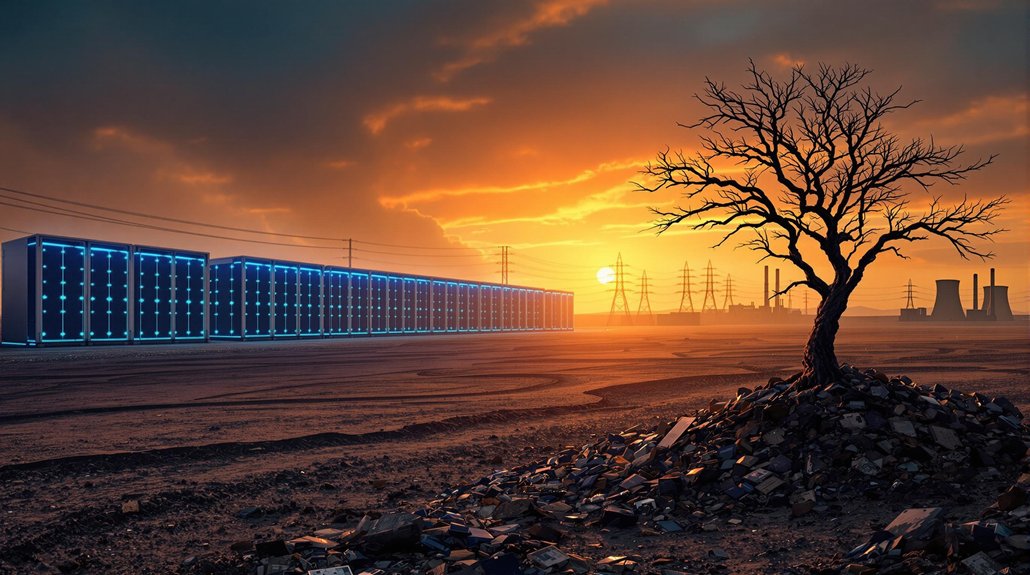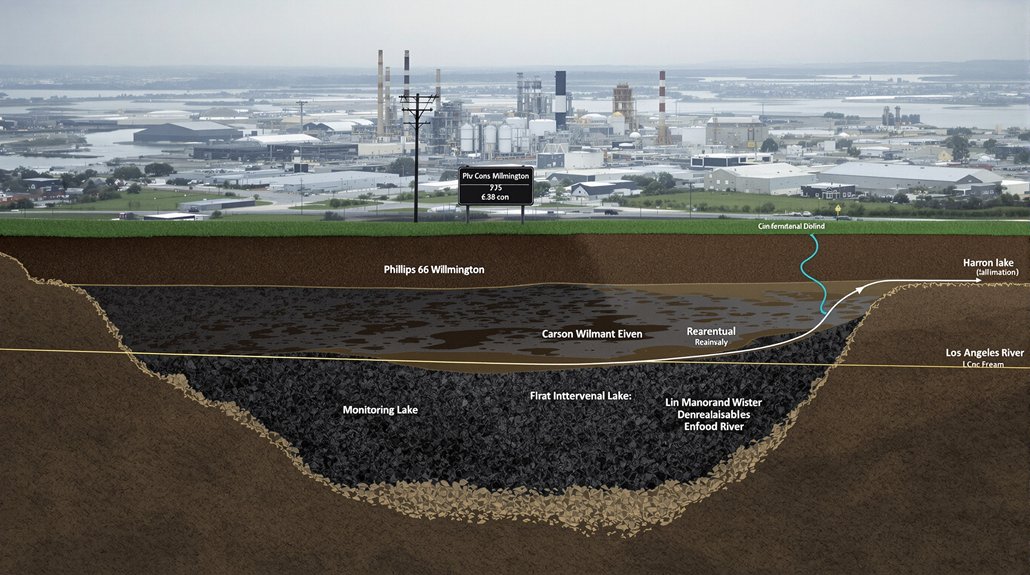AI’s growing footprint raises serious environmental concerns. Data centers powering AI have increased electricity use by 72% since 2019, contributing to 3.5% of global emissions. Each ChatGPT query generates 4.32 grams of CO₂. These facilities also consume massive amounts of water for cooling and create significant e-waste. Communities near data centers face resource competition and pollution. The environmental burden isn’t equally shared as tech giants pursue solutions.
How is artificial intelligence affecting our planet? The rapid growth of AI technology is creating significant environmental challenges. Data centers that power AI systems have increased their electricity consumption by 72% from 2019 to 2023. This surge is putting pressure on energy grids worldwide, with some AI facilities using as much power as small countries.
The carbon footprint of AI is concerning. Every time someone uses ChatGPT, it generates about 4.32 grams of CO₂. Training just one large language model can produce emissions equivalent to driving a car for hundreds of thousands of kilometers. AI is currently responsible for 3.5% of global emissions, a figure that continues to grow as companies expand their AI investments. Despite these impacts, only 12% of executives measure the environmental effects of their AI use. The number of data centers has exploded worldwide, increasing from 500,000 to 8 million since 2012.
AI’s carbon footprint is alarming, yet most executives ignore environmental impacts when deploying these systems.
Water usage is another growing problem. AI data centers need massive amounts of water for cooling. These facilities consume millions of gallons annually, often in regions already facing water shortages. Cooling systems require approximately 2 liters of water per kilowatt hour of energy consumed by data centers. This increased demand is worsening water stress in many communities and affecting local ecosystems.
Electronic waste from AI operations is piling up too. Data centers regularly replace servers to maintain efficiency, creating more e-waste containing toxic materials. Current recycling systems can’t keep up with the volume of discarded components, leading to environmental contamination.
The environmental burden of AI isn’t shared equally. Data centers are typically built in places with cheap resources, causing some regions to face greater strain on their water and energy supplies. Communities near these facilities often experience increased pollution and competition for resources. Countries in the Global South may also receive more e-waste from AI operations.
Some companies are working on solutions. Tech giants like OpenAI and Google have pledged to use renewable energy and aim for carbon neutrality. Improvements in data center design and AI algorithms can make systems more efficient. However, without widespread adoption of these practices, AI’s environmental impact will continue to grow as the technology expands.








